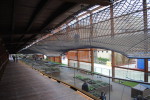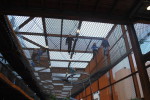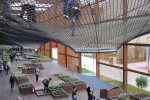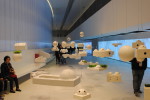A network. Flexible. Fluid. Decentralized. It is the metaphor used by the Brazilian Pavilion to invite the visitors to go into their space and experience the multi sensory installation built for the Universal Exhibition. With its 4,000 square meters on three different floors, the space of Brazil was built thanks to the project of Studio Arthur Casas, in collaboration with the Atelier Marko Brajovic, winner of the competition declared from the Institudo de Arquitetos do Brasil (IAB ).
It is located near the entrance of the exhibition area, in a strategic position of high traffic and it is designed to be reused after the end of Expo 2015, thanks to the sustainable and environmentally friendly materials used. Attention to the environment has been a focal point of the whole work, even during phases of construction and commissioning, as well as will be low impact also the process of dismantling the structure.
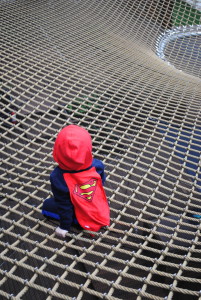 The visitor, when entering the open area of the Brazil Pavilion, can see a space dedicated to the cultivation of plants, flowers and fruits in Brazil, enhanced by interactive tables with games and information on crops exposed. In this area it has been made perhaps the most loved by the public of Expo structure: a hanging net, real central attraction of the pavilion, where you can walk, jump and play interactive experience but also symbolic. With a language and a contemporary approach, the network is the materialization of his sensory concept: it invites you to walk through its weaving, until you get to the inside of the building, watching the great axis exhibition from another point of view. It is an invitation to "see through”, to see "through the eyes of the network" the crops exhibited on the ground floor and the museological display of local culture. For every "depression" on the surface of the network there is a place dedicated to pleasure, rest or reflection. The network is interactive: people interact with each other and interfere in space by means of light and music. The weight and movements of visitors are detected by sensors that activate lighting and music systems differently. A ramp leads to the first floor of the pool, where on a wall of 56 meters in length it is broadcasted a video that accompanies the visitor along the exhibition. On the opposite side, however, the visitor can see the products of the Brazilian agribusiness system, through five digital stations. On the second floor, there is a film projected on a canvas transparent glass. Inside the Pavilion, also, it was built an auditorium that can accommodate up to 200 people, which will be used for conferences, seminars or other events.
The visitor, when entering the open area of the Brazil Pavilion, can see a space dedicated to the cultivation of plants, flowers and fruits in Brazil, enhanced by interactive tables with games and information on crops exposed. In this area it has been made perhaps the most loved by the public of Expo structure: a hanging net, real central attraction of the pavilion, where you can walk, jump and play interactive experience but also symbolic. With a language and a contemporary approach, the network is the materialization of his sensory concept: it invites you to walk through its weaving, until you get to the inside of the building, watching the great axis exhibition from another point of view. It is an invitation to "see through”, to see "through the eyes of the network" the crops exhibited on the ground floor and the museological display of local culture. For every "depression" on the surface of the network there is a place dedicated to pleasure, rest or reflection. The network is interactive: people interact with each other and interfere in space by means of light and music. The weight and movements of visitors are detected by sensors that activate lighting and music systems differently. A ramp leads to the first floor of the pool, where on a wall of 56 meters in length it is broadcasted a video that accompanies the visitor along the exhibition. On the opposite side, however, the visitor can see the products of the Brazilian agribusiness system, through five digital stations. On the second floor, there is a film projected on a canvas transparent glass. Inside the Pavilion, also, it was built an auditorium that can accommodate up to 200 people, which will be used for conferences, seminars or other events.



